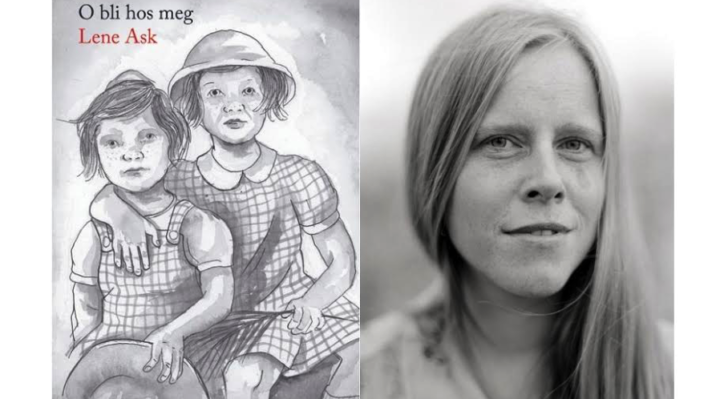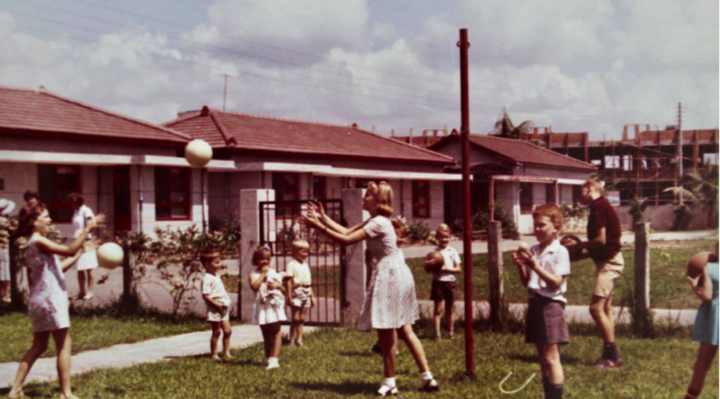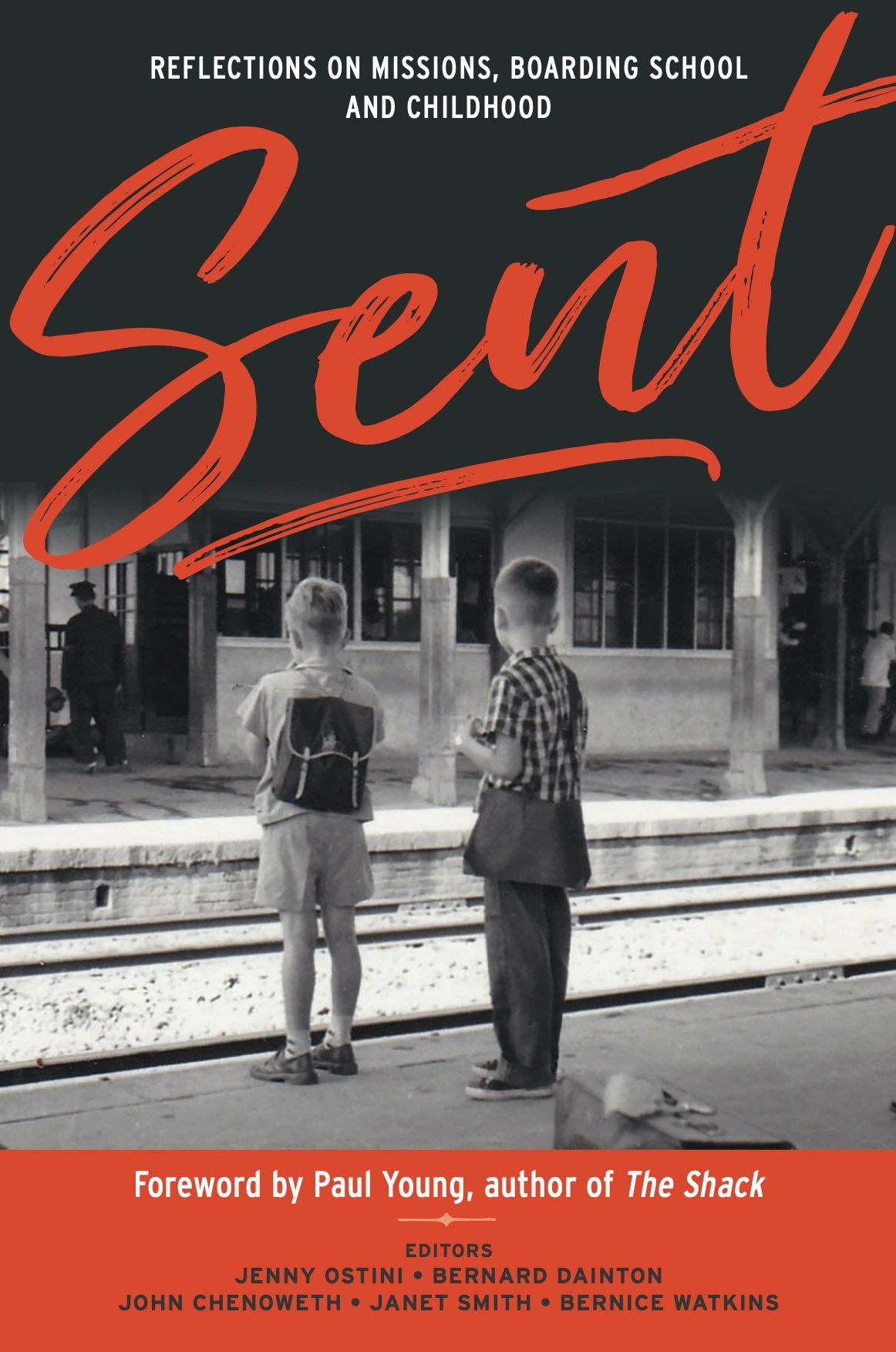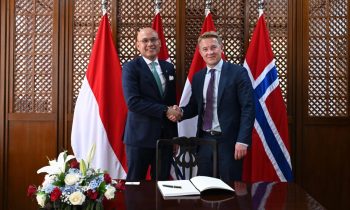Like Kari Grasmos paintings in 1989, the book creates strong emotions and reflection.

Lene Ask (b. 1974) is a writer and illustrator. She is a photographer, illustrator, cartoonist and writer for many books. Her first book in 2006 was printed in 50000 copies.
Lene Ask has addressed ten former missionary children in her last book. There is strong evidence of guilt, bullying, neglect and abuse. The book received two-page reviews in several newspapers in Norway. The book looks innocent, but contains explosives. No other nation has had as many missionaries in relation to population as Norway. Many of the missionaries who traveled had children. The children were often placed in their own boarding schools under the auspices of the mission, far away from their parents.
- – When I was a child, Lene Ask tells, – I attended sunday school where I listened to stories about the brave missionaries; the ones who traveled to countries with exotic names like Madagascar or Cameroon to tell about Jesus. In my book ”Abide with me” I have interviewed 10 people who grew up in the shadow of their parent´s missionary call. They lived in boarding schools far away from their parents. Their stories is about longing, loneliness, alienation and, sometimes, abuse. I have collected their stories and illustrated their words. This is the untold story of a missionary history told from the children`s perspective.
- – Before I draw, Lene Ask continues, – I first create text. the text comes before the illusions. I can´t plan what to draw. But when I have the text, there may be some void I fill out with drawings.
In many countries, local schools were difficult for foreigners. Before internatinal schools were started, missionaries may have left their children in an orphanage or by relatives back home. Later, Norwegian mission organizations started their own boarding schools so the children could see their parents more often. But bad roads and far distance made it not easy to travel. Sometimes parents were placed far out on the countryside or even in an other country. Many children saw their parents only twice a year. Others could live in the same city as the school.

The Norwegian school in Taiwan started in Pingtung in 1966. It was later moved to Taichung and closed down in the beginning of the 1990s.
A problem with international schools, exams from junior high schools abroad were not accepted for admission to high schools in Norway. Therefore after junior high school, students had to go to the USA for studies. So in 1966 a Norwegian school was started in Taiwan in cooperation with the school office in Oslo. But even the school got a qualified Norwegian teacher, the first years exams from the school was not accepted by high schools in Norway. Back then only exams from junior high school in Norway was accepted.
Mission journals wrote positive stories about the missionary families. Negative stories, but never about children. were only published when the mission needed more money.
In 1987 special teacher Inger Kristine Løge went to Taiwan as a teacher for the Norwegian boarding school in Taichung. Soon she found out, special educational assistance was needed as direct measures for the children and guidance of parents and teachers. She contacted the other 3 Norwegians schools in Asia (Nepal, Hongkong and Japan). and found out, they also needed special educational assistance.
In the school year 1988-89, she completed a project and became a traveling special education teacher for 130 students and about 20 teachers in four schools.
Never before has anyone put the spotlight on the missionary school’s schooling.
- – The Norwegian children in Asia has the same problems as children in Norway, teacher Løge told her local newspaper Jærbladet. – They struggle with social and emotional problems as in Norway. But schools abroad do not have the same opportunity to receive guidance and help if necessary.
In the autumn of 1988, Thorkild Andersen initiated a gathering of missionary children to discuss growing up. He was left as a child in an orphanage in Stavanger while his parents were missionaries in Madagascar.
In 1989, child psychiatrist Siri Rynning asked whether families with children should travel as missionaries. – The mission organizations should take this question very seriously, she told the newspaper Vårt Land in February 1989.
A few days later, Vårt Land released the story of Kari Grasmo who paints herself out of vicious missionary childhood memories from the Norwegian boarding school in Japan. This started a greater ”Me Too” movement and many articles in different media in Norway. One of the school owners invited former students of the school to a conference where psychiatrist Siri Rynning took up 3 subjects:
– two-culture issues,
– separation parents child.
– sexual abuse.
Former students then started an interest organization (NORUT) for all children of Norwegians abroad. Kari Grasmo released a booklet with her paintings called Barneskjebner (Child destinies). Berit Dahl wrote the book Bortsent (Sent away) about her childhood in Madagascar. Some members started courses for organizations that send families abroad. Missionary organizations paid for psychiatric therapy, but little in redress. No abusers were punished.
But in September 2013, one of the interview objects in Lene Ask‘s book went to court against the missions that owned the boarding school in Taiwan where she felt sexually abused by a male teacher in 1988-89 while teacher Løge was visiting other schools in Asia. The former student in Taiwan accused the missions of neglect, abuse and lack of follow-up.
Instead of supporting her, they put the responsibility on parents who sent their children to boarding school, even most parents had no choice of school. But the mission leadership and the father of the second interviewee from Taiwan believed that parents have a responsibility when traveling abroad with children. The case was amicably settled.
When most of the boarding schools had closed down, so did the organization NORUT. Still, many feel it was a mental assault being separated from mother and father. Mission boards may have the moral responsibility, they do not take the consequence of it.
Therefore this year, 2022, some missionary children are planning a collective lawsuit against one of the missions.
About the same time as Abide With Me was released in Norway, the book Sent was released in USA. It is about reflections on missions, boarding schools and childhood. The front cover shows two 1. grade students ( a Norwegian and an American) in 1958 waiting at the train station in Pingtung, Taiwan, for a ride to the American boarding school in Chiayi. They had to change train in Kaohsiung by themselves, no adults looked after them on the journey.
Abide With Me is not yet released in English, but an English translation is planned to be presented at Taipei International Book Exhibition in June this year.
Geir Yeh Fotland, reporter. formosa1951@gmail.com




